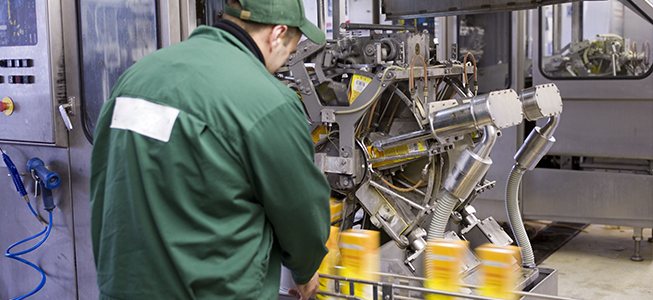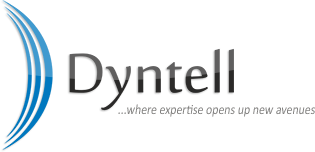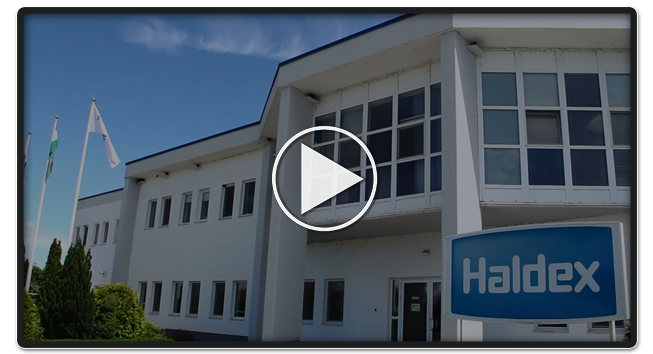
Sites, Competencies
Multi-site use
During capacity planning, a production planner has access to the capacity and relevant information at several locations; the planner can then find the optimal solution. When loading master data, Dyntell.P@rtner ERP system is able to take account of the heterogeneous structure of the sites involved. As a result, both manufacturing and transport costs can be minimized. In addition, it becomes easy to make shifts that free up extra capacity in localized areas. With the availability of correct cost accounting and management information, it becomes possible to compare sites based on requested and agreed upon parameters (for example, productivity, margin, use of materials, waste levels, standard working hours, etc.).
Competencies according to site
Each site may be assigned competency regulations which may be available to individual users.
Database synchronization
In the case of multiple site management, database synchronization is also available even when there are problems with online access. Even a modem connection may be sufficient for data exchange.
Master Data Registering and Management
BOM, Source list
Dyntell.P@rtner ERP allows you to manage your production flexibly, whether based on assembly line, work station or other type of production, technology integration or autonomy. The parameterized source list can handle the most complex production, no matter how complete or semi-finished the level of manufacturing. With correct use of primary data, many formerly manual functions can be taken over, greatly reducing time of production administration. Appropriate primary data is a cardinal point in a project. It can be re-formatted or migrated, and we will help you make the evaluations needed to make this decision. The source lists are also easily variable or copiable; it is not necessary to apply it to the entire primary data just because of a new operation or substitute material.
Batch management, LOT number management
The entire production process as well as the finished products can be tracked or retrieved according to batch or LOT number. This is possible using other dynamic properties of the batch or even an individual serial number.
Storage management
Referring to storage facilities within the warehouse, storage locations, based on street, shelf, floor, etc.
Tracking, Provenance Registration, Recall, Waste Management
The system allows you to determine and list the products on a given bill of delivery. Criteria are: what kind of acquired basic material (with identification number) it is made of, which operations it has undergone and which workers produced it (provenance register). There is also a recall statement, using a given identifier for basic materials to determine which finished products contain them and also identifies the bill of delivery and the customers to which the products were delivered.
Losses caused by waste can be reduced by up to a tenth by detecting the weak points of production technology. Waste management can be followed in real time and categorized according to machine, supplier, employee, etc. Tracking makes it possible to determine the origin of possibly flawed basic materials.

Cost Calculation
On the basis of precise cost calculation, products can be re-priced, and you can re-arrange your product portfolio. You can even reach a 30% growth in revenue. It is possible to calculate according to LOT or serial number, product or project.
You may choose whether pre-calculation is done on the direct or indirect level. During the bidding process, vendors are able to calculate exact collateral, margin and expected profit by taking the capacity plan into account. Direct cost calculation takes the source lists into consideration (see: BOM, source list, production lists, etc.), as well as all the information found in the body of the article. This data is stored separately for each project or production order and can be easily retrieved and compared with the post-calculation.
During post-calculation, Dyntell.P@rtner ERP calculates financial figures not only for the entire project, but for semi-finished levels as well. Thus you can see which parts of the project are producing the profits or losses. Reports play a significant role in post-calculation since they provide the basis for the concrete and real cost of production, and these can be compared with the pre-calculation data. This data can be displayed graphically or as plan fact data in order to show how the production trend is developing.

Planning
Capacity planning, demand calculation, generating of automatic purchase proposalAnalysis and planning of basic material, machine, tool and labor capacities based on orders, production scheduling, identification of bottlenecks.
Production scheduling
The management of machines and production teams can be more easily timed to production. This makes it simpler to determine when a machine is free and can be fit in a schedule.
Material insurance plan
Based on customer orders, the system checks the needed raw materials in the warehouse and submits delivery orders. If necessary, it maintains materials at a minimal supply.
Production plan
By breaking down production planning into multiple phases, you are able to estimate the necessary capacity and cooperation demands. Design interfaces make it possible to obtain information on other alternatives. The goal of the function is flexible production and ensuring the optimal availability of appropriate resources. One of the system's biggest advantages is its ability to calculate data in any direction. The starting point may be determined so that you can calculate the demands of any component (machine time, human resources, material disposition, etc.).
Coarse and fine level planning help to optimize the use of resources in production, as well as preparation for acquisition of appropriate labor, raw materials and tools. Because of the unique needs of manufacturing companies, individual manufacturing technology is always custom designed.
Following appropriate parameter settings, capacities may be anticipated even a year in advance. In cases where manufacturing methods vary from what is anticipated, daily ad hoc production management also becomes easier.
Vendors see pre-calculations during bidding and are quickly and accurately able to calculate the cost of production, the expected margin, collateral and profit.
Production Tracking
Information arising from manufacturing may be collected in several ways. An initial evaluation establishes which type of production report will be used. We may use an immediately applicable hybrid system, barcode or RFID, manual report or some form of post-report. In order to optimize manufacturing efficiencies, we must apply the correct form of report. The principal numerical and statistical data relating to manufactured products can be tracked from anywhere, even from a tablet. Dyntell.P@rtner continuously calculates production capacities from current data so that you can track in real time how much free capacity you have and how it is changing. This applies equally to the use of basic materials, as well as labor and machine utilization.
You may utilize a visual display in the factory or in your office. For example, you can easily use it to demonstrate the manufacturing process to potential customers. The interface is dynamic and can be drilled down, allowing you to track data down to the document level.
Waste Management
An integral part of Dyntell.P@rtner ERP system is quality assurance during the production process. Quality assurance is integrated into the manufacturing process during management of materials (inventory), planning and follow-up stages of manufacturing, as well as tracking the quality of the final product or service sold (e.g., warranty, maintenance, recall cases). This allows the company’s waste treatment policy to be handled flexibly (with reference to reasons for waste, types of waste, waste storage, waste reports, waste certification, waste remediation, etc.).

Support for Small Batch Manufacturing
You can manage your small batch manufacturing quickly and effectively with the help of resource inventory templates. During the planning phase, it is also possible to simulate possible manufacturing orders by using modifiable parameters. This will enable you to calculate which parameters would be the most worthwhile for production. In addition, the system indicates recoveries or losses at given semi-finished levels. This kind of optimization, technological change and cooperation enables you to turn many unprofitable situations into profitable ones.

